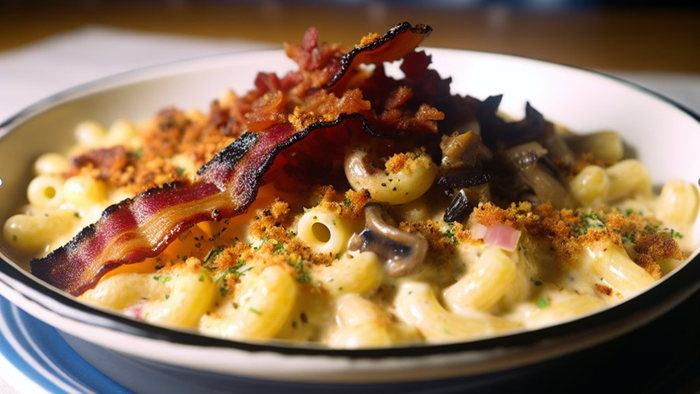Four Steps to Building a Successful Off-Premises Catering OperationFour Steps to Building a Successful Off-Premises Catering Operation

To most people, a catering spread looks like lunch. But to many restaurants, it’s a business opportunity. More brands are embracing the robust business of catering. Subway and KFC, for instance, have entered that world. So has Chick-fil-A, whose webpage displays elegantly packaged meals to hook customers who eat with their eyes first. Even retailers such as Costco, Walmart, and Target have skin in the game. Why are brands rushing to make such accommodations? Probably because they hope to dip into the lucrative market of catering. There’s no doubt that the restaurant industry is being shaped by trends such as healthy eating, meal-delivery services, and technology harnessing Big Data. But nothing has been more powerful than the rise of off-premises catering. The catering market is not just for big brands, either. The huge market is still an evolving segment of the industry, and few brands have a large enough national footprint to dominate market share, meaning anyone can get a foot in the door. A solid catering strategy can help you build both your top and bottom line. The off-premises market in the United States is huge and continues to grow. According to Technomic’s August 2018 “Catering Usage and Preferences” report, the off-premises market topped $61.5 billion last year. More than a third of that market—nearly $24 billion—went to business catering. The balance of nearly $37.6 billion went to social catering. These figures are commanding and opportunity abounds. “Not only did business catering haul in nearly $24 billion last year, but the segment has grown by more than 20 percent from 2014 through 2017, according to Technomic.” While operators may be most familiar with consumer delivery and social catering (think buckets of wings and platters of sliders for the big game), business catering is worth considering, too. Not only did business catering haul in nearly $24 billion last year, but the segment has grown by more than 20 percent from 2014 through 2017, according to Technomic. In fact, many restaurants can pursue business catering without putting significant strain on their main operation. That’s because the operational cycles of their dine-in service are compatible with business catering. Think about it: restaurants are typically busy on weeknights and weekends. Walk into the kitchen during the day, when most prospective customers are at school or at work, and you may notice a lull. In contrast to this, the busy hours of business catering occur between 9 to 5, when offices need meals and snacks delivered for board meetings. For restaurants like these, adding a catering platform to their existing business makes sense. What’s the situation of your restaurant? Could you stand to benefit? Launching an off-premises catering business poses new challenges. The endeavor can be difficult to navigate. Fortunately, there are steps that operators can take to ensure their catering operation moves forward without a hitch. Here are four steps to building an off-premises catering strategy to drive top line growth and bottom line profits. One: Set the foundation There is no standard, “one-size-fits-all” business plan that will work for all restaurants. That’s because there is not one type of catering business; there are many. To be successful, there are things that operators can do to guard against wasting effort and money—and to improve their odds for success. The first step is to identify what resources you have, or will need, to get your catering business off the ground. Do you have: • Someone on the team who can take ownership of catering? (That individual is your point person, but they can’t do it alone.) • On-the-clock employees who can be cross-trained to support catering? • Adequate prep, staging, and storage space for off-premises orders? • Adequate equipment to support a catering operation? • A point-of-sale system or online ordering platform that can help you organize more catering orders? • Access to drivers, vehicles, or third parties to facilitate delivery? • People or organizations in your network with whom you can forge partnerships? • Capital to invest in the systems above? Consider each of the elements listed above as you build a foundation for your catering business. This preliminary planning can be the difference between success and failure. Two: Define the experience If you want to nab consumers of business catering, you’ll need to connect with them thoughtfully. These consumers have particular needs, after all, that differ from those of dine-in customers. The menu, prices, and customer experience that you install for your catering business should reflect their needs. Menu. Your catering offerings should relate to your current dine-in menu and be consistent with your brand. However, those catering items most likely will not be identical to your dine-in menu. In fact, you should primarily select items that travel well and that can be easily prepared in bulk. Soup, for instance, is prone to spills and notoriously difficult to keep piping hot, so it’s probably not the best choice for catering. On the other hand, sandwiches, wraps, bowls, and salads are excellent choices: easy to execute and package, and simple for the customer to consume. Prices. Catering menu pricing should be determined by the price of ingredients, as with any menu item. Make sure your bulk pricing (based on a per-unit cost) is relatively consistent with your in-restaurant pricing. Also, make sure to set your business apart from the competition with value-based pricing. Customer experience. Providing customers with great experiences isn’t a new philosophy, but it is as important as ever. So, make sure you get the customer experience right. Consider, for example, the type of employee that is best-suited to taking a catering order by phone. Or, if you choose to go this route, how will you ensure that your third-party delivery drivers hustle—and take the time to set up orders carefully? If something goes wrong, what’s your plan to respond to complaints? These challenges will make or break a catering business. If you want to solidify the long-term success of your catering business, it’s critical that you think through the entire customer experience, from the time an order is placed to the time it is delivered. Establishing good customer relationships can drive repeat orders. Make sure your team has all the resources to execute. Three: Execute the model Once you’ve done all the preliminary work and you’re satisfied with your business plan, the next step is to execute it. At the point of execution, there are four factors to keep in mind: 1. Ease of ordering. When a customer calls in to learn about your catering services—and is put on hold during a lunch rush for 20 minutes—that’s not good for your business. Neither is it good when prospective customers can’t find your business online—and therefore can’t place an online order for your catering. Think about what you can do to prevent scenarios like these. Ask yourself: have you made ordering easy? 2. Accuracy. Hand-written orders get lost or forgotten when they’re misplaced in a binder. Orders get scrambled when an employee mishears words over the phone. There are other scenarios like these and businesses suffer as a result. Is there a system in place to ensure the accuracy of catering orders? 3. Timeliness. A catering order is worthless to a customer if it is delivered to a lunch-and-learn an hour after the meeting has dissolved. Are your catering orders being delivered on time? 4. Quality. Sloppy or subpar food is a poor representation of your brand. If catered food is not up to standard, customers may not return to support your catering business. Are you sending out quality food? If your operation suffers from some of these problems, there are some obvious fixes. One fix is digital ordering, which streamlines the ordering process for your team and helps to ensure that orders are accurate and punctually ready for the driver. You should also implement standard operating procedures to make sure everything goes according to plan. This isn’t possible without leadership and a trained staff in place. Hire a qualified person to run your catering operation and give that person the right support to build and grow your business. While this may require investing up front, a successful off-premises catering program will pay off in the end. “By partnering with a third-party delivery service or a catering marketplace that also supports delivery, you extend the reach of your bricks-and-mortar store digitally.” Four: Create demand The final step is letting people know about your off-premises catering operation. Marketing sounds brutally expensive, but it doesn’t have to be. Branding your new offering can be as simple as sliding a few copies of your catering menu or a stack of branded napkins into every delivery order. Posting news on social media about your catering business can also help. So can engaging customers with a dash of humor or warmth via a tweet. Still, the easiest and most effective way to get the word out is by going digital. By partnering with a third-party delivery service or a catering marketplace that also supports delivery, you extend the reach of your bricks-and-mortar store digitally. This creates one more channel for potential customers to discover your brand. The added searchability and customer ratings provided by these services can help your brand jump ahead of the competition. This kind of effort can help to drive in-store traffic as well. There are a lot of opportunities in the off-premises catering market right now. Keep in mind that a catering business must be carefully executed if it is to succeed. While it will take some planning and capital to lift your catering business off the ground, the four steps discussed above can help you to strengthen your business systematically, and create a sustainable foundation. Find the time to nurture your business, and steer it in the right direction, and you’ll find that success is well worth the effort. Want to learn more about corporate catering, third-party delivery, and adding a catering stream to your restaurant? Catersource 2019 has the information for you to excel. Click here for more information!



.png?width=700&auto=webp&quality=80&disable=upscale)

.png?width=700&auto=webp&quality=80&disable=upscale)

